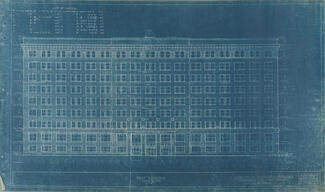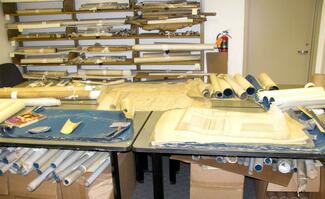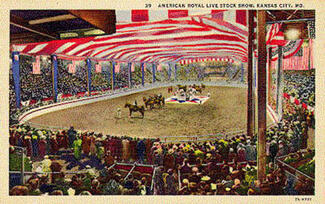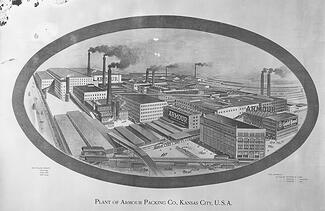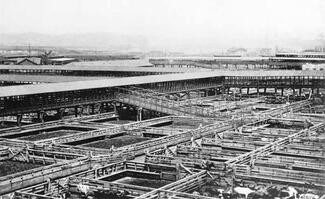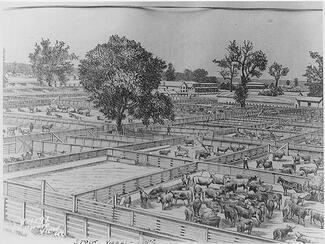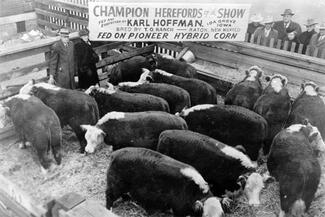Stockyards
Kansas City Stockyards Digital Collection
The Missouri Valley Special Collections recently added a “Stockyards” digital collection to our website. This digital collection is comprised of photographs, maps, blueprints, and architectural drawings from the Kansas City Stockyards archival collection. Though there is currently only a small portion of the collection digitized, we hope to continue adding to this collection as more items are scanned.
Sorting Cattle from Chaos: Processing the Kansas City Stockyards Collection
While the word "chaos" may seem a bit extreme, it is often what an archivist sees when confronted with a large collection that has no original order. Before Missouri Valley Special Collections (MVSC) staff acquired the Kansas City Stockyards Collection, its 6,000-plus items had been scattered about the Livestock Exchange Building. Any discernable order to the items — some over a century old — had been lost, and many were in fragile condition.
The American Royal: A Gift from the Stockyards
As a beloved and longstanding institution, the American Royal owes much of its early success to the Kansas City Stock Yards (KCSY) Company. The bond between the Stockyards and the growing organization was certainly one of mutual benefit. The American Royal needed leadership, financing, and housing; the Kansas City Stockyards needed a thriving livestock industry.
Kansas City’s Livestock Hotel: Daily Operations at the Stockyards
Imagine driving through the West Bottoms on October 19, 1943, when the Kansas City Stock Yards (KCSY) Company set a world record by receiving 64,015 head of cattle in a single day. For perspective, in its first year of operations, 1871, the stockyards received a grand total of 120,827 head.
During those 72 years, the central livestock market in Kansas City had become increasingly essential to the economic well-being of many Americans.
Unionization Comes to the Slaughterhouse
In the late 19th century, livestock and meatpacking industries had spurred Kansas City’s growth into an industrial giant. Almost 200,000 miles of railroad tracks covered the United States, and the refrigerator car had been patented, improved, and nearly perfected. This gave the meatpacking industry a huge boost, which in turn created the need for more workers along every step of the slaughterhouse process.
Cattlemen and Visionaries: The Men Who Made the Stockyards
Kansas City claimed a population of just 4,418 in the 1860 census. With the opening of the Hannibal Bridge in 1869, and the arrival of the cattle trade and development of the stockyards, the city exploded onto the world stage, boasting the second largest livestock market in the United States and a population of over 160,000 by 1900.
Kansas City Cattle King: Relics of the Stockyards
“Paris of the Plains,” the “City of Fountains,” and more recently the “Soccer Capital of America” are all names that come to mind when one thinks of Greater Kansas City. Or at least that’s how boosters have tried to promote the city in an effort to shed its stereotypical Midwestern “cowtown” reputation.
Dusting Off Kansas City’s Cowtown History
What’s the saying? One man’s trash is another’s treasure?
Lucinda Adams recalls the day, five years ago, when she and a couple of members of the Library’s facilities staff were led into a converted storage room in the old Kansas City Livestock Exchange building in the city’s West Bottoms.



